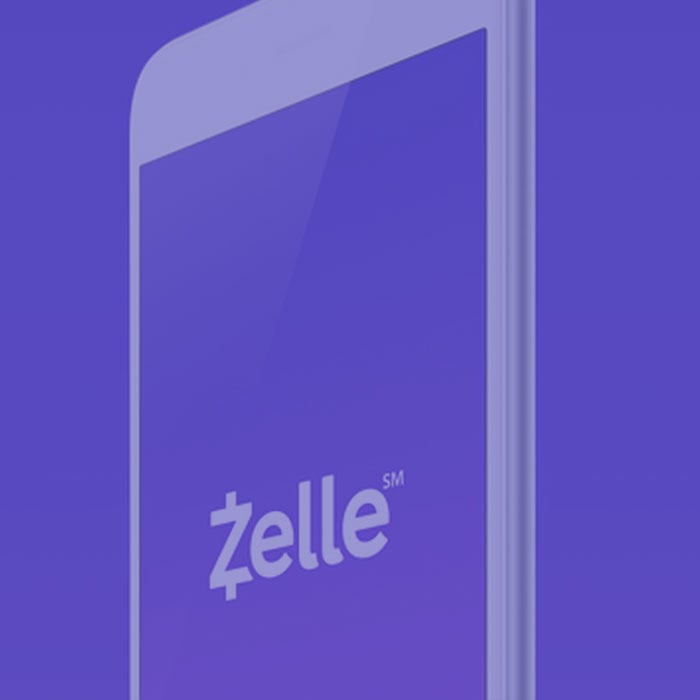Virtual peer-to-peer (P2P) payments first became available, in a much more crude manner, when PayPal hit the mainstream in 2002. Since then, the field has widened and developed considerably. In 2017, anyone who owns a smartphone has their pick of Venmo, PayPal, Tilt, SnapCash, SquareCash (CashApp), Facebook Messenger, Apple Pay, and Google Wallet.
Users can send send that $20 they owe their friend with relative ease right from their bank account to the mobile phone of their intended recipient. However, these applications have one glaring shortcoming: they are not real-time.
Yes, when someone sends you money via Venmo or CashApp, you can see the transaction on your phone within seconds. However, that money cannot be deposited immediately into your bank account...without a price.
This is where Zelle comes in.
Zelle: Benefits for banks and their customers
Zelle is the first P2P transaction application that will allow users to make transactions in real-time. Now, when someone sends you money electronically, you can see that sum in your bank account immediately and without a fee deduction. Designed by clearXchange, Zelle as an integrated function of mobile banking apps, already adopted by 38 banks in the States.
Beyond bringing convenience to customers, Zelle can deliver several benefits to banks who are rapidly adopting the service. Let’s examine five of the most significant opportunities for financial institutions.
Mobile Payments are exploding
In a world where everything is going digital, the movement of currency is not going to fall behind that curve. In 2016, 84 million people used P2P payments--a 35% increase since 2014. By 2021, 129 million users are expected to send $336 billion through US mobile payment applications. For context, that means that up to 1% of the entire forecast GDP of the United States in 2021 will be sent digitally from person to person. That is quite the chunk of change.
Banks are missing out by not getting themselves a piece of mobile transactions. Every cent of money passed through a competing app is potential lost capital for banks. Take Venmo, for example. Venmo, a subsidiary of PayPal, is the most popular P2P app in the market. The app, which saw its average user access the service at least twice a week last year1 handled $17.6 billion in that frame.
Deposits are a major source of revenue for banks, and will not profit from the flow of funds through Zelle directly. However, since Venmo (and many of its competitors) allow you to store this money in the app itself instead of depositing it into your bank account, banks are losing out billions of dollars in deposits. Zelle will allow banks to capitalize on the mobile payment trend and reclaim that lost capital from other FinServ start-ups.
Zelle enhances the customer experience
Implementing P2P payments is beneficial for financial institutions in general. P2P payments help banks increase customer  loyalty and engagement. Institutions that use P2P apps tend to see higher engagement from their customers. Take PayPal for example. When PayPal introduced the Pay With Venmo capability, it saw 30% more engagement from its users (Business Insider).
loyalty and engagement. Institutions that use P2P apps tend to see higher engagement from their customers. Take PayPal for example. When PayPal introduced the Pay With Venmo capability, it saw 30% more engagement from its users (Business Insider).
Zelle is a safer bet than any other app. Banks that implement Zelle are not attaching their flag to an unstable ship. With partners that include Citi, Bank of America, and PNC, Zelle will hit the market with 86 million potential users. That is 86 million people who will already have Zelle integrated into their mobile banking user experience.
That immense user base will offer incredible convenience to consumers. With a base that large, it makes it more likely that whoever you want to pay will probably have access to Zelle, too. That isn’t the case with any other P2P app, which would make users more inclined to use Zelle from the get-go.
Zelle can help banks grow their share of the millennial market
This is one I can speak to personally, as a card-carrying, bona fide Millennial. Over 60% of Millennials regularly use digital payment apps on their smartphones, making them the most likely age group to do so. P2P payment is so ingrained into the consumer experience for us that we frequently colloquialize “Venmo” and “CashApp” as verbs (ex: “can you ‘Venmo’ me for that t-shirt?”, or “I am CashApping him for lunch.”)
However, the the 3-day wait period for money to deposit is the largest drawback of current digital payments that affects Millennials the most. When you cover lunch for a friend and they pay you on SnapCash, you and all 12 remaining dollars in your bank account need that payment to hit as soon as possible. This is why Zelle will be so vital to this age group: It solves the greatest problem facing mobile payments. Bank-operated P2P platforms have historically done poorly with this demographic, but the convenience and real-time capabilities of Zelle will do well to change that.
Research has shown that millennials are apathetic about financial service providers. The Millennial Disruption Index shows that 53 percent of millennials do not see a tangible difference between banks, and one in three people would consider changing banks. Worse yet, 71 percent would rather go to the dentist than listen to what banks are saying. With Zelle, banks finally have a service that millennials value and use often that can serve as a platform to begin building a long-term relationship they can cultivate into loyalty.
Increased margins
I mentioned in the first section how Zelle can help banks regain the capital that P2P applications have been siphoning from them. However, that is only the tip of the profitability iceberg when it comes to the new digital payments platform.
Zelle will allow banks to cut a considerable amount of costs in the long run. Digital P2P payments are the next great step in the obsolescence of physical cash. With this newfound ability to move money and pay for goods and services without ever having to withdraw and deposit cash, banks can uncover cost saving opportunities, including:
- Need for fewer branches and smaller branch blueprints
- Less need to hire tellers, reps, and other office personnel
- Cost savings from reduced ATM implementation and maintenance
- Reduced expenses processing cash and checks
In the future, banks will have the ability to sell Zelle services to businesses that are also trying to reduce paper costs. Despite the fact that Zelle is a free service with no immediate profitability, it can be a very fruitful investment in the long run.
The move to P2P payments is quickly gaining momentum. While it has gained the most traction with millennials, the introduction of Zelle is set to take the capability mainstream. Banks will realize several benefits as Zelle usage takes hold, from strengthening relationships with millennials who are typically less brand-loyal, to a more unified customer experience and the potential to reduce costs and increase margins.



